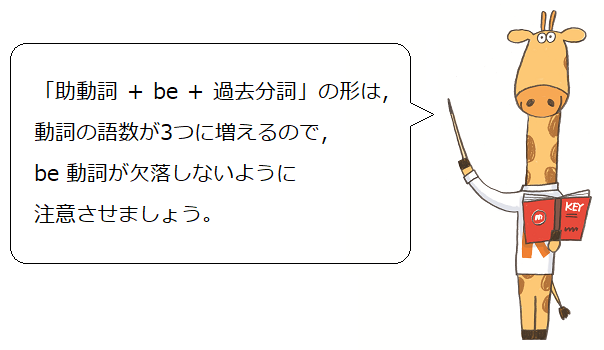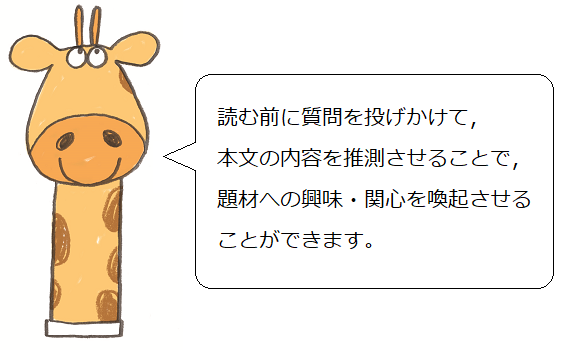授業のワンポイント
助動詞を含む受け身 / Save Elephants in Kenya[インタビュー]
■ターゲット文法の導入例助動詞を含む受け身
生徒と対話しながら,助動詞を含む受け身「助動詞+be+過去分詞」の形と,「can be +過去分詞」で「〜されることができる」,「will be +過去分詞」で「〜されるだろう」の用法を導入します。
T:Everyone, do you have any plans for spring vacation?
S1:I'm going to go to Kochi.
T:Good. Yosakoi dance can be seen there.
S1:Yes.
T:Everyone, what's the meaning of "be seen?"
S:「見られる」
T:Good! Then, what's the meaning of "can be seen?"
S:「見られることができる」
T:Very good! S2, do you have any plans for spring vacation?
S2:I'm going to go to Hyogo.
T:Good. Spring Koshien will be held then. Everyone, what's the meaning of "will be held?"
S:「開催されるだろう」
T:Very good!

■Oral Introduction 例Save Elephants in Kenya[インタビュー]
本文の場面設定を中心にOral introductionを行います。
T:You're going to read an interview with a vet named Dr. Takita. She helps to protect wild animals in Kenya. Where is Kenya?
S:Africa!
T:Yes, it's in Africa. She helps to protect the biggest animal. What's the biggest animal? What do you think?
S:I think elephants are the biggest animals.
T:Good. They are one of the biggest animals in the world, but they have enemies. In Kenya, there are bad men, called poachers. The word "poacher" means 「密猟者」in Japanese. They kill elephants for their ivory. One popular animal is very useful to protect elephants in Kenya. What animal can be used? Guess it.
(1分ほど考えさせて,何人かの回答を聞いて板書します。その後,本文を読ませます。)

Unit 8「Working Overseas」Part 3 Read & Think (教科書p.108〜111)
アンケート
よろしければ記事についてのご意見をお聞かせください。
Q1またはQ3のいずれか一方はご入力ください。

